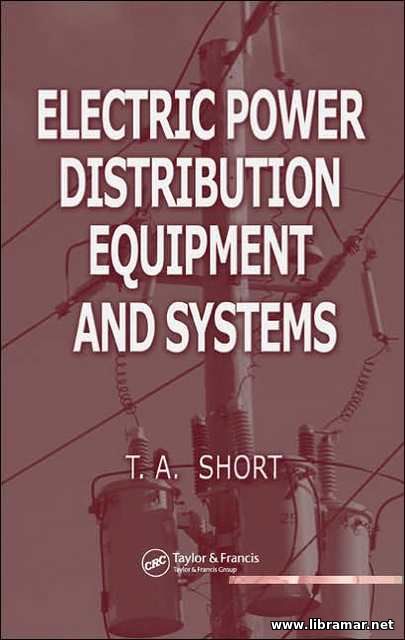 Nowadays, all issues that are relating to the distribution and quality of the electric power continue to be there among the challenges that are considered very serious in the electric utilities industry. It is therefore critically important to make a right choice of the architecture and all associated equipment for a particular application.
All chapters included in this volume were carefully selected by the author, T. A. Short, from the world popular Electric Power Distribution Handbook in order to provide the readers with the sharply focused economical reference on the latest technological advances and infrastructures enabling the top efficient and highly reliable distribution of the electrical power. The author starts his publication with some fundamentals of electric power distribution systems describing the configurations and substations, as well as electric loads and principal differences existing there between the American and European systems.
The publication might also boast with a look at the recent developments of the field in question; note that it also addresses some possible future challenges and problems that are expected today. The author elaborated on all types of distribution networks, covering both theory and practical issues. Some individual chapters deal with the transformers, capacitors and voltage regulation etc.
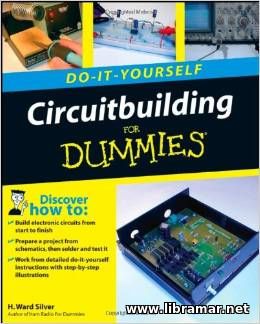 This easy-to-understand book gives a funny and very easy way for beginners to start building electrical circuits for their projects. Have you ever tried to construct you own electronic device, or repair a cable for the microphone, or do anything like this?
Here is an excellent publication for you, that will be actually of great use for such enthusiasts. Inside this book the readers will find all necessary techniques and tools they require to start building the circuits - note that the material presented in the book is supplemented with the very well-illustrated instructions helping readers with accomplishing the tasks and completing the projects. You will be able to construct so many projects while learning the most important principles and techniques of the electric circuit building.
You will also get some useful information related to the testing and measuring, troubleshooting, maintenance, electric cables and connectors etc. The book addresses nearly all stuff you have to know and provides all required tools together with the explanation of their proper use; you will know how to make sense of electrical schemes, understand the basic techniques for creating circuits, start making and repairing connectors and cables, get aware of the good procedures for maintenance and testing etc...
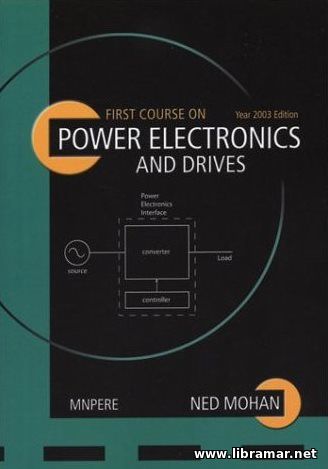 The book by Ned Mohan has been specifically designed having the undergraduate students in mind, who would be most likely to take one single course on the subject of the publication; the book will for sure be helpful when it is used to prepare those students for the industry.
It imparts the fundamentals of the theory and also provides some sort of roadmap for further training, with the technical info contained in this book being mainly based on feedbacks that have been received from more than three hundred faculty members at various workshops. This publication includes so many interesting chapters that have been sequenced in the order allowing to maintain students' interest throughout the entire course.
The students will study the structure and applications of the switch-mode PES (power electronic systems), get the info on the converters and feedback controllers, understand the practical details of implementing a power-pole, get detailed description of the diode rectifiers, magnetic concepts, PFC (power-factor-correction) circuits, controller design, various electric motor drives, thyristors, uninterruptible power supplies, utility applications of the power electronics, etc. The arrangement of the material also allows the instructors to omit some of the topics in order to concentrate on another...
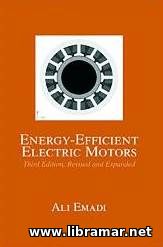 This is the 3rd, significantly expanded and thoroughly revised, release of the popular and well-detailed reference book providing all technical guidelines that may be required for the correct selection and proper further use of the various electric motors for better performance and increased reliability, improved efficiency of the energy and, in addition, more economical life-cycle cost.
The publication is reflecting the actual situation in the current field, and describes to readers all the latest major technological developments related to the control electronics, and the economics of energy efficient electric systems/motors, and the advanced power electronic drivers. This latest edition of the book includes some completely new chapters that are intended to address the most important topics, e.g. the fundamentals of the power electronics as applied to the electric motor drives, motor drives of the advanced switched reluctance, adjustable speed drives together with their applications, permanent magnet, no-brush direct current electric motor drives.
This book should be treated as critically valuable for the electrical engineers, equipment makers and all other involved parties like specialists dealing with the maintenance and operation of the equipment in question, for the informed decision making.
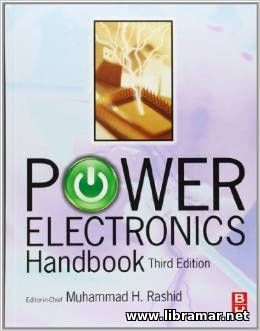 The third edition of the Power Electronics Handbook by Muhammad Rashid. Power electronics of today is a growing area that is using the latest electronics technologies to convert between different forms of electric power; it has so many applications in the human life such as the motor drives, a/c units, power supplies and sources of renewable energy.
The present handbook was intended to address literally all aspects that are relating to the switching devices, control technique, including various analytical methods and their applications. The book was specifically designed to appeal to the new generation of engineering professionals. The publication includes four chapters dedicated to the renewable energy, energy storage and transmission, DCG, i.e. distributed and cogeneration technology, generating sets, variable speed electric generators, wind turbines, fuel cells etc.
The readers of this book, upon its completion, will be able to provide a real leadership in the field of the technical design applied to the various power electronics projects. It consists of forty-five chapters with the valuable contributions that have been made by the leading experts in the industry. The author has managed to achieve the purpose to provide people with the useful but quite concise reference equally suitable to students and pro's.
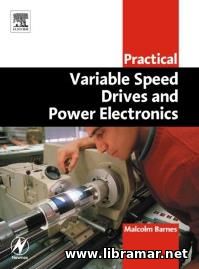 This volume written by the recognized industry professional, Malcolm Barnes CPEng BSc (Electrical Engineering) MSEE is intended to serve as a thorough and remarkably comprehensive guidance for all industrial control and electrical power engineering applications.
The title features an excellent practical coverage of the key topics like control wiring and troubleshooting, and provides readers with the understanding of all problems introduced by VSDs, explains in detail everything related to the variable speed drives (VSD) and many more. The book covers all typical applications if the variable speed drives in various fields of the process control and/or handling of materials; moreover, the publication provides readers with basic understanding of the matters that are concerning the installation and operation, maintenance and possible required troubleshooting of VSDs.
The author provided the practical coverage of the most important topics such as operating modes, auto-restart, control wiring, harmonics, troubleshooting, electrostatic discharge etc. The book shall definitely be treated as the good essential reading for all electrical engineers regardless of their skills and professional experience, and anyone using these drives in process control or any other industrial context.
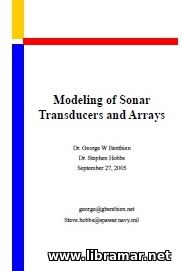 The present report covers numerous topics considered important and relevant in the modeling of sonar transducers as well as transducer arrays. The distribution of this publication was quite limited since some part of the material contained i it was classified as critical for military purposes. Among the topics covered within this publication there are acoustic and structural modeling, electrical interconnections, structure-acoustic coupling, material parameters, specific types of acoustic projectors and others.
The book starts with the chapter dedicated to the acoustic modeling. It addresses such issues as the equations depicting the acoustic wave, various analytic solutions of the wave equation, integral relations, and integral equation methods, point sources and dipoles, plane wave solutions, wave envelope method, infinite element methods etc.
The next chapter deals with the structural modeling and covers variational methods, interpolation schemes, fluid, structural, piezoelectric and magnetostrictive finite elements, variational approximations etc. In short, the book is specifically recommended to the persons dealing with the sonar transducers and will be useful due to the valuable information contained in it.
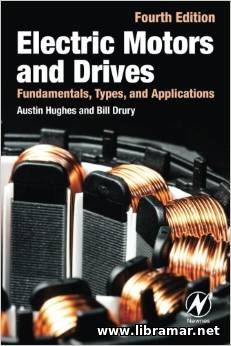 The publication is aimed at non-specialists using the electric motors/drives, and it was released to fill the gap that is there between the theory-based academic books and a bit more prosaic 'handbooks' providing useful detail but giving little to not opportunity for the real understanding and development of insight. It addresses nearly all modern types of motors/drives, including both conventional and brushless direct current induction motors plus servo drives.
The present third edition of the book includes numerous examples and diagrams; moreover, there are so many new topics covering the material that has not been included in the second release of the publication. The authors used a minimum of mathematics in order to make the book easy to use and make the material easy to understand to all groups of readers. The material and data provided in the book are up-to-date and will be useful to OEM designers, electricians, users of the electrical equipment, maintenance and repair personnel who are involved in making decisions.
Anyone who spends some time on this book will get a truly comprehensive understanding of the subject. We would say that it is an excellent technical book and maybe even one of the best books on electrical motors and drives available today. Though the material has been presented in a very understandable manner, the publication retains its technical soundness.
« 1 2 ... 5 6 7 8 9 ... 15 16 » |







